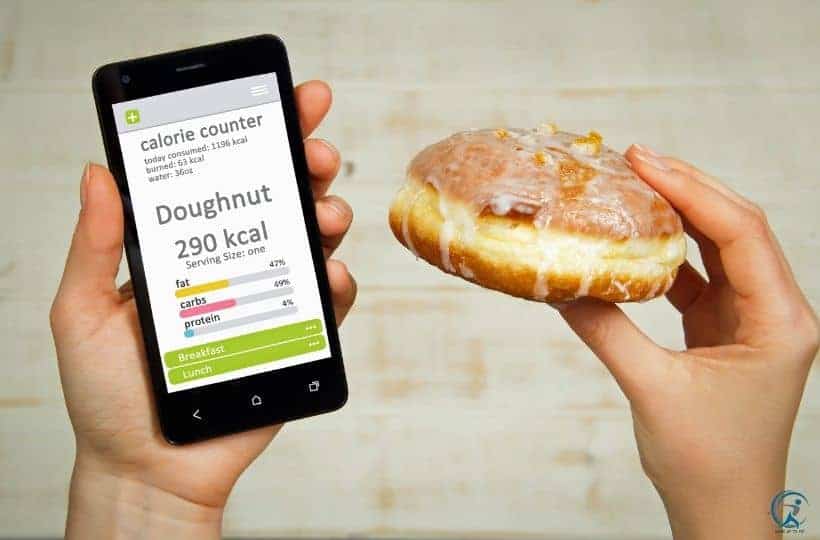You banned junk food. You meal-prep kale. You even swapped soda for kombucha. Yet the scale keeps climbing. Sound familiar? You’re not alone. Thousands of people type gaining weight while eating healthy causes into Google every week. Here’s the brutal truth on weight management through healthy eating: healthy food still has calories. And calories still count.
In the next ten minutes I’ll show you the nine sneaky reasons the scale is betraying you, how to spot hidden calories in healthy foods, and the exact playbook I use with clients to drop fat without dropping avocados.
1. The Healthy-Calorie Trap: You’re Simply Eating Too Much
Almonds. Olive oil. Chia pudding. All clean. All calorie bombs. One tablespoon of olive oil is 120 calories. One handful of almonds is 170. Two “harmless” snacks and you’ve inhaled a McDonald’s cheeseburger worth of calories.
| Healthy Food | Typical Serving | Calories |
|---|---|---|
| Olive oil | 1 tbsp | 120 |
| Almond butter | 2 tbsp | 190 |
| Quinoa | 1 cup cooked | 220 |
| Medjool dates | 2 pieces | 133 |
Multiply that by three meals and two snacks. Boom—2500 “clean” calories. No wonder you’re gaining weight on a whole food diet.
Fix: weigh, don’t guess. A cheap food scale (
Why You’re Gaining Weight (Despite Eating Healthy)
2. Water Retention After Diet Change: The First 14 Days
Switch from take-out to home-cooked and your body hoards water. Every gram of glycogen stores 3 g water. Add more carbs (sweet potatoes, fruit) and you can gain 3–7 lb in a week. It’s not fat. It’s biology.
Signs it’s water:
- Waistband tight but abs still visible
- Weight jumps overnight
- Ankles puffy
Give it two weeks. Water settles, glycogen metabolism stabilises, and the scale drops.
3. Hidden Calories in Healthy Foods: The 500-Calorie Salad
Restaurants know you want clean food. So they sell you a “harvest salad”—with 300 calories of candied pecans, 200 calories of goat cheese, and 400 calories of honey-lime vinaigrette. Total damage: 900 calories.
Common calorie assassins:
- Smoothie bowls (granola + coconut flakes)
- Starbucks oat-milk lattes (200 cal per grande)
- Whole avocado on toast (320 cal)
Read labels. Anything over 10 cal per gram is red-flag territory.
4. Gaining Muscle vs. Fat on a Healthy Diet: The Scale Lies
New lifters can add 1–2 lb of muscle per month while dropping fat. The scale stays flat or rises, but clothes fit looser. That’s a win.
| Metric | Month 1 | Month 3 |
|---|---|---|
| Body weight | 150 lb | 152 lb |
| Waist | 32 in | 29.5 in |
| Body-fat % | 28 % | 22 % |
Track waist, hip, neck and progress photos—not just weight. Better yet, grab a body-composition smart scale.
5. Stress, Cortisol and Late-Night Dinners: The Hormone Factor
Cortisol tells your body to store fat around the organs. Add a 10 pm dinner and insulin stays high overnight. Result: morning weight spike.
Quick fixes:
- Finish last meal 3 h before bed
- Take supplements that lower cortisol like ashwagandha
- 10-minute post-dinner walk
Clients who close the kitchen at 8 pm lose 1–2 lb per week without changing food quality.
6. Healthy Foods That Cause Bloating: The False Fat
Broccoli, lentils, sugar-free protein bars—they feed gut bacteria. Bacteria produce gas. Gas stretches the abdomen. You think you’re fatter; you’re just full of air.
“Why am i gaining weight when i’m eating less and working …
Swap these for low-bloat alternatives:
| High-Bloat Food | Low-Bloat Swap |
|---|---|
| Cauliflower rice | White rice (measured) |
| Black beans | Canned lentils (rinsed) |
| Whey protein | Collagen peptides |
Still bloated? Try an elimination diet for 21 days.
7. Is My Workout Making Me Gain Weight? The Inflammation Phase
New exercise causes micro-tears. Fluid rushes in to repair them. Scale jumps 1–3 lb. Again, not fat. It’s inflammation.
Signs:
- Sore muscles
- Weight spike day after leg day
- Normal urine colour
Keep lifting. The inflammation fades in 72 h and metabolism stays elevated for 48 h. Win-win.
8. Portion Distortion: How to Stop Gaining Weight on Good Foods
Use the plate method: ½ veggies, ¼ lean protein, ¼ smart carbs. Add one thumb of fat. No second helpings for 20 minutes. Still hungry? Drink 500 ml water, wait 10 min. Most cravings vanish.
Pro tip: Pre-portion nuts into 100-cal snack bags. You’ll eat 70 % less.
9. The 14-Day Healthy Diet Weight Gain Solution
Ready to break the plateau? Follow this checklist:
- Weigh everything for 3 days (use Garmin Index scale)
- Cut all liquid calories except black coffee
- Walk 8 k steps daily
- Strength train 3× week (see power-lifting exercises)
- Sleep 7 h minimum
- Repeat for 14 days
Average client result: 3 lb scale drop, 1 in waist gone. No food group eliminated.
Frequently Asked Questions
Why am I gaining belly fat even though I am exercising and eating healthy every day?
Because belly fat is hormone-driven. High cortisol from stress, skimpy sleep, or over-training tells the body to park fat around organs. Pair a slight calorie deficit with stress-control habits—meditation, magnesium, earlier dinners—and the belly shrinks even if weight stays stable.
Key Takeaways
- Healthy ≠ calorie-free. Track for two weeks.
- Water weight after diet change is normal—wait 14 days.
- Strength gains can mask fat loss—use tape, not just the scale.
- Control portions, not food groups.
- Lower stress and close the kitchen earlier.
References
- Moreland OB-GYN. I Eat Healthy, Why Am I Gaining Weight?
- Healthline. 9 Causes of Unintentional Weight Gain
- EatingWell. 8 Sneaky Reasons You Could Be Gaining Weight
Alexios Papaioannou
Mission: To strip away marketing hype through engineering-grade stress testing. Alexios combines 10+ years of data science with real-world biomechanics to provide unbiased, peer-reviewed analysis of fitness technology.
